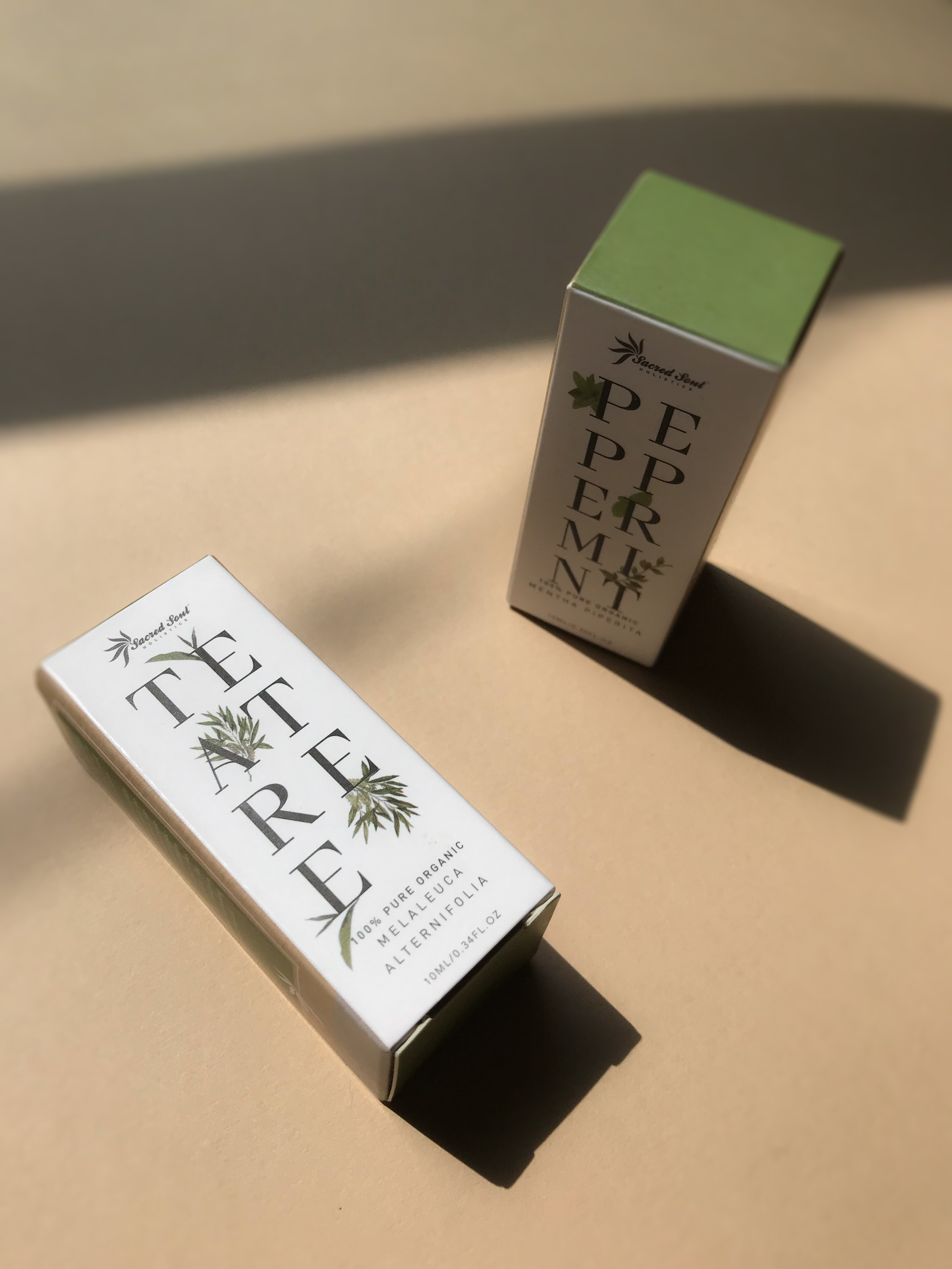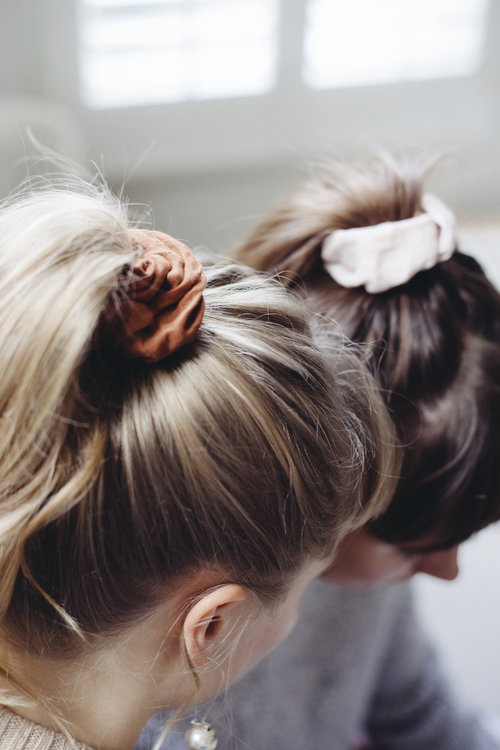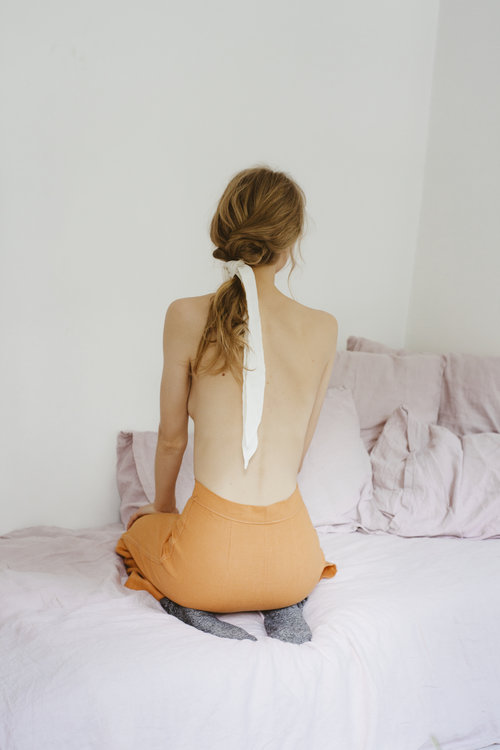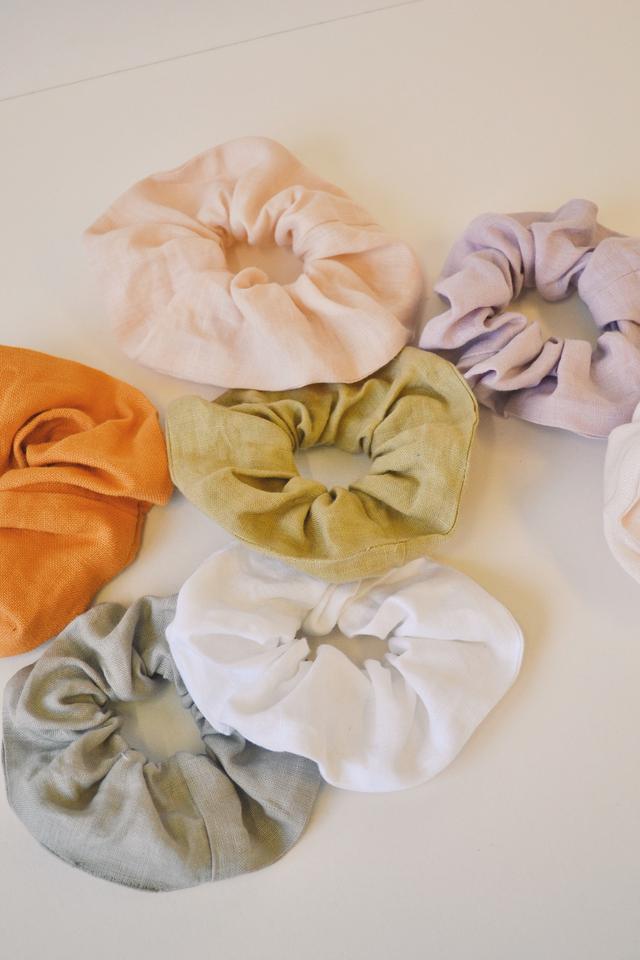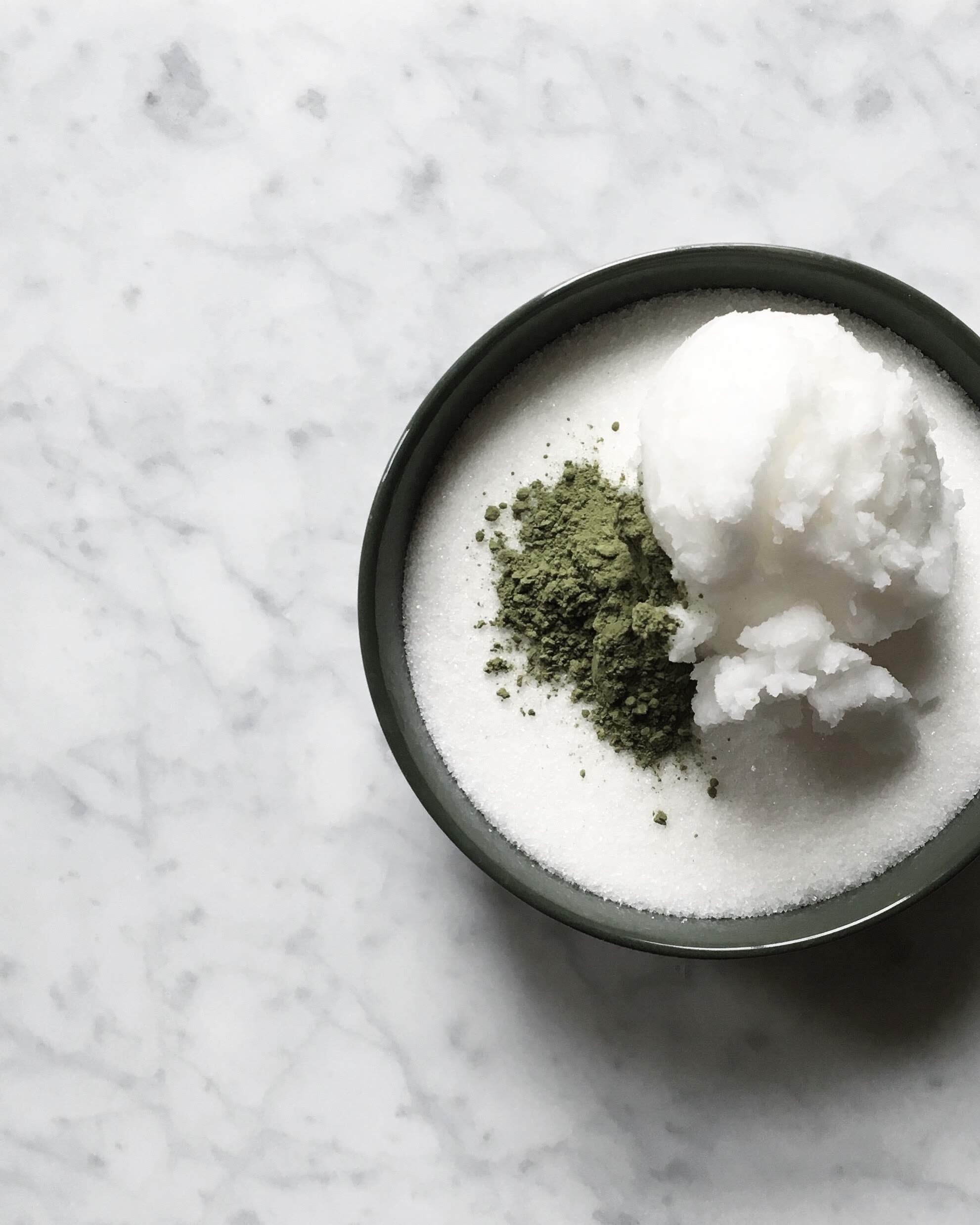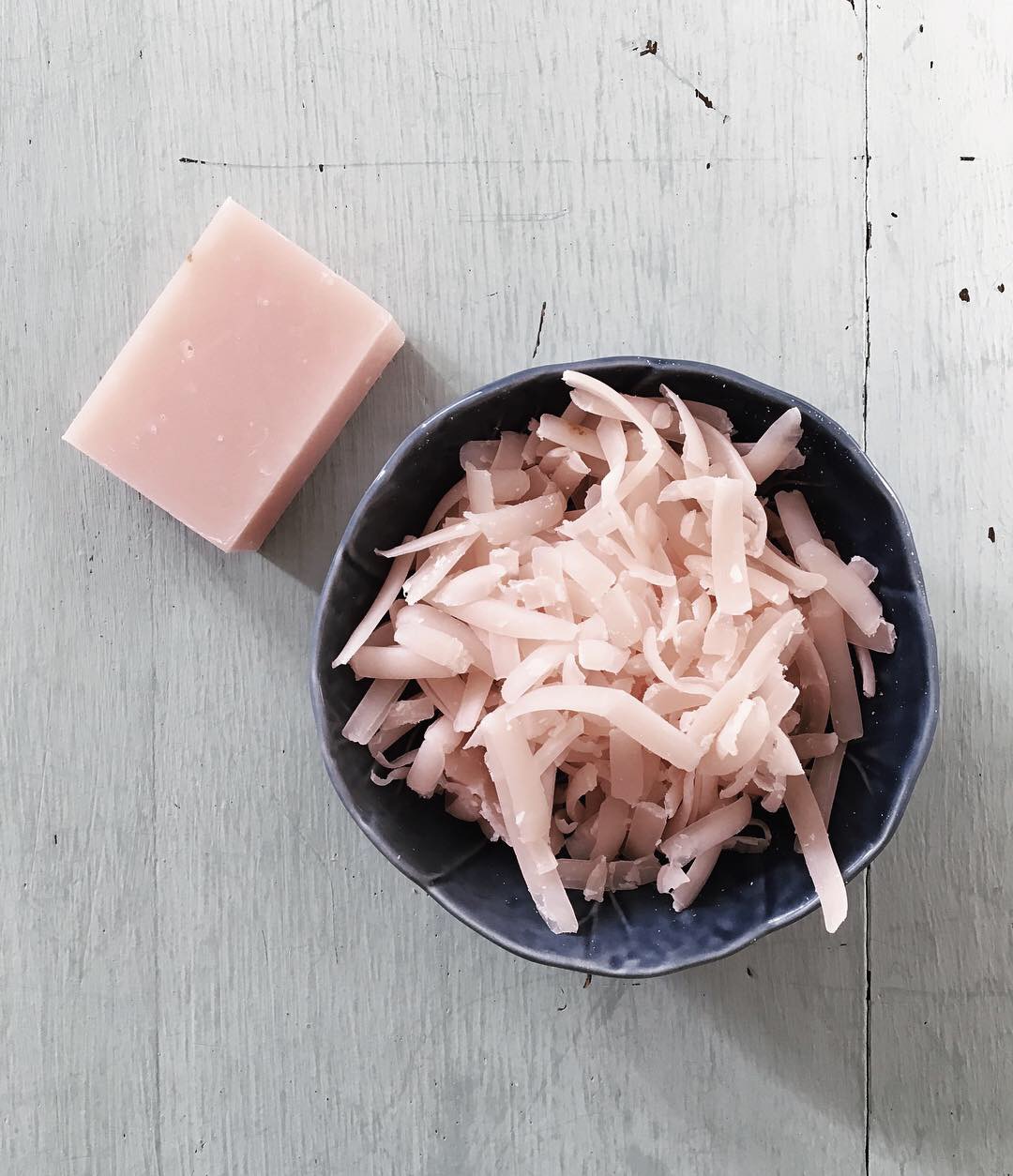LETTERS of ARA
An online journal & newsletter, exploring areas of influence & interest for Ara the altar.
Plastic Free Pearly Whites
As part of Plastic Free July, I share my plastic free dental care routine including a simple DIY mouthwash recipe
As part of Plastic Free July, on Instagram throughout the month I’ve been sharing a few things that help to minimise my daily reliance on plastic.
When it comes to looking after the pearly whites, a bamboo toothbrush has been a solid part of my dental care routine for a good few years now. They’re so handy for me to repurpose in the workshop too.
Finding the right toothpaste fit was bit more of a journey. I really like the Georganics English Peppermint Toothpaste. In attempt to further minimise waste I did have a little a stab at making my own toothpaste. Long story short, it was not for me. I found the required amount of baking soda made it too salty and I couldn’t stick it out. This led me to have a little dabble with toothpaste tablets which I’ve been using for a fair few months now. You pop one in, give it a good chew (which took me a while to get used to), and then brush as normal as it turns to a paste. They create so little waste/mess and I love that you can buy them in bulk and keep in your own container.
I’d also been thinking about making my own mouthwash when the perfectly timed Rachel of The Foraged Life popped up in my Instagram stories with a little DIY recipe (thank you, Rachel!). It’s a really good base that I’ve tweaked just a little along the way to suit my taste etc. It’s so simple I thought I’d share with you what’s now part of my routine in case you want to give it a try. You can also find Rachel’s original recipe here (amongst lots of other helpful info for eco-friendly living).
DIY Mouthwash
Ingredients:
peppermint essential oil - the essential oils I use for everything (including cleaning etc.) are from Sacred Soul Holistics - they are organic and the packaging is dreamy
tea tree essential oil
baking soda - if you don’t have a local bulk store, Zero Waste Club (UK) supply this online, plastic free
filtered water (I don’t have a water filter so before using, I boil some water and let it cool)
a glass bottle - my spherical bottle is from a local supplier, Wares of Knutsford
funnel (this is optional but makes life a little easier, no need to buy one though - I made this from a piece of scrap paper and some washi tape)
Method (to make approx 400ml)
Step i)
Prep your water & pour into your glass bottle with a little room to spare
Step ii)
Add a few teaspoons of baking soda using the funnel. I have found that too much of this can make the solution taste salty so I’d suggest going slowly with this and see what works for you
Step iii)
Add peppermint oil to taste (the more the merrier for me - I add around 20-25 drops)
Step iv)
Add tea tree oil. Not a huge fan of the taste but it’s worth sneaking in for its antibacterial properties (around 10 drops)
Step v)
Shakey shakey
I hope that you have found this little post of use or at least of mild interest! I feel like I’m mostly there with my plastic free dental care routine but I’m still on the lookout for some biodegradable, vegan floss.
Let me know if you give the recipe or any of the products a go. If you have any other recommendations I’d love to hear them.
Lauren
☾
Purposeful Packaging | Designed & Made In House
An introduction to Ara’s new packaging, designed & made in-house with minimal waste, using fabric woven in Lancashire.
For the first chapter of Ara the altar’s journey, the GOTS certified, organic cotton drawstring bags -which I had made specially in a carbon neutral factory as part of an ethical supply chain- have served me so well. For some time, however, in preparation for coming to the end of my supply, I have been looking for a way to further minimise Ara’s carbon footprint by bringing the production of my presentation packaging in house, in line with the slow approach I adopt in my jewellery design and production. The brief I gave myself was threefold:
1) Purposeful
To me, it feels counter intuitive to waste energy and resources creating packaging that would provide little value, use or longevity for my customers. Instead, I wanted to create a product that would be long-lasting and functional, in which to keep Ara pieces safe.
2) Low Impact
With respect for people and the planet integral to every aspect of the brand, it was of paramount importance to source a traceable, locally and ethically produced fabric, created from natural, sustainable materials. Furthermore, it was important to me that the design and methods used to produce the product itself would ensure minimal environmental impact and minimise waste, with a zero waste goal.
3) Reflective of the brand
Whilst first and foremost the packaging would have an intended purpose, I also wanted it to be something for Ara customers to treasure - not something mass produced but a slow-made keepsake to accompany their chosen piece.
After months of research, design and finding sewing pins everywhere, I am so pleased to share with you my new, slow-made, purposeful packaging that has been thoughtfully designed and created in-house; designed and developed by me and my partner, David, who has learnt to sew on a 1921 Singer to make these little pouches that will accompany every piece of Ara the altar adornment.
The Fabric
I began my search for a fabric that had been created with utmost respect for the earth. After some initial research I knew I wanted to work with hemp or linen, given their very little reliance on water or pesticides. It transpired that most of the hemp suitable for this project was made in China (which did not meet the requirements of my brief when concerning Ara’s carbon footprint). Whilst I did manage to source more locally made European hemp the fabric available to me at the time did not possess the qualities suitable for this particular project. I am, however, really keen to support the use of this fabric so keep an eye out for an exploration into hemp later down the line. In continuing my search for the perfect, earth-kind linen, I was delighted to find a very special fabric with UK based company, Bysshe, who source fully traceable, European yarns, and weave them into beautiful fabric, here in the UK. This small, independent company ensures “the highest quality at the lowest environmental cost, developing fabrics for a sustainable future”.
I fell for a beautifully tactile, twill cloth, woven on a Jacquard loom in Lancashire. The fabric is constructed of linen weft yarn, made from certified European Flax in France by a Masters of Linen certified company. The linen weft yarn is woven across GOTS (Global Organic Textile Standard) certified organic cotton warp yarns. The fabric was then finished in a specialist finishing mill up the road in Yorkshire. Finished without bleach treatment, this fabric celebrates the natural hues of the flax and organic cotton. On one side, the natural linen is more prominent -slightly flecked throughout, in warm, natural, earthy tones- and on the other side, the organic cotton twill is more prominent, appearing lighter due to its natural hue, and incredibly soft to the touch.
The Design
When it came to the design, our aim was to develop a pattern that would make the most effective use of the fabric with the least waste. We also had to consider the product’s intended purpose (to keep its cargo safe), and to ensure that the design would suit the thickness and properties of the fabric. Consequently, we chose to design a little pouch that would not rely on a drawstring closure (again to further minimise waste) and we developed a design based on a simple, repeatable rectangle to ensure minimal, if any, fabric waste.
Our unique design utilises a sewn down, fold-over top to keep belongings neatly tucked away inside. At first glance, it might not seem obvious how to easily open the bag. By folding the top flap inside-out, the full width of the opening is revealed, and the treasure can easily be tucked in or taken out.
The Production
It was important that the production of the bags reflected the production of the pieces: slow. For this project, my partner, David, learnt to sew on a very special Singer sewing machine from 1921, spotted and purchased in a charity shop by my grandad, and given to my mum many years ago. By managing the production of the bags in house, using GOTS certified natural organic cotton thread, and traditional production methods powered by 100% renewable energy, Ara the altar can continue to tread even more lightly whilst creating our earth-aware offerings.
I think these bags are really special and truly reflect Ara’s ethos. I am so pleased that one of these little pouches will accompany every piece of Ara the altar adornment.
Lauren
☾
Anti Waste Hair Accessories
Looking for a way to utilise the abundance of linen scraps from their production process, Bug Clothing, in collaboration with Glasshouse Salon, created a selection of timeless anti waste hair accessories.
Images by Sarah Victoria Bates for Bug x Glasshouse
I love to see thoughtful, independent businesses come together to create something considered, beautiful and purposeful, so I was over the moon to learn that Bug Clothing and Glasshouse Salon were combining their resources and skills to create a collection of dreamy anti-waste hair accessories.
Looking for a reason to use the abundance of linen scraps as a result of the production process in the Bug Hackney Wick studio, Bug worked together with Glasshouse to dream up and create a selection of three timeless accessories:
the classic scrunchie
a head wrap - perfect for the beach or days when you don’t want to wash or deal with your hair
a hair ribbon - for low pony-tails, low buns, or tying your hair up in a new way
Handmade by Bug founder, Amy Ward and her team, the scrunchie, head wrap and hair ribbon come in a beautiful range of linen colours and weights, available to purchase from both Bug Clothing and Glasshouse Shop.
When this collaboration launched last year I knew it was something I wanted to support. I love the idea of repurposing scraps that would otherwise become waste, together with knowing that the pieces are made from linen, a sustainable, natural material with little reliance on pesticides or water. I have fine, wavy hair that never sits quite right in a pony tail and I chose the hair ribbon in Cardamom. I love using it to tie my locks in a low knot or up in a high pony. It looks effortless and is an easy way to introduce a little pop of colour. I’ve still got my eye on a terracotta scrunchie..
Bug Clothing produce beautiful garments on a small scale using only natural fibres from deadstock designer factory waste. Bug make use of existing excess, rather than contributing to the production of new materials. Bug’s garments ‘reflect the ideology that we should all buy less and admire quality and consideration over quantity’ and they believe that ‘clothing should be comfortable and purposeful, without faulting on style, so we design garments that can be worn for years to come’. I love that Bug creates with longevity in mind, and I have fallen for their Earl jumpsuit.
Glasshouse Salon seek to make natural, organic and ethical hair and beauty more accessible. With a focus on long-term condition of hair, Glasshouse use only products that contain gentle, nourishing, natural ingredients. Their sister shop, Glasshouse Shop, combines the salon’s know-how with the Glasshouse aesthetic, offering unique, professional products that encompass all aspects of beauty - hair, skin and body. The shop takes care to approach hair and beauty needs with high regard to sustainability, considering every brand they stock from a sustainable and ethical perspective.
☾
Low Waste Washing Up
I share my plastic free dish washing set up.
Our low waste dish washing set up
As part of Plastic Free July last year, one of the things I shared was our low waste dish washing set up and this little collection of tools that my partner and I gradually built up over the years. When taking steps to live more consciously, whilst it can be tempting to replace existing plastic items with more sustainable ones, I’m very much an advocate of first using up what we have. When the time does come to replace any items, we can be sure that we have gotten the most out of them and can feel good about our choice to replace them with something less environmentally impactful.
Whilst these tools all have their uses, the one I reach for most is the coconut scrubbing brush (top left). It’s the perfect size for cups and mugs but it makes cleaning bowls super simple too. Replacement brush heads are available for the wooden handled brush on the right so when the heads reach the end of their life they can go straight into the compost. We also have a large bottle brush that’s great for our reusable water bottles and a less than appealing, old, slightly abrasive cloth that’s useful for the surfaces etc.
One of the more recent additions to our little collection, and the biggest step away from a daily reliance on plastic, was this block of olive soap from Savon de Marseille. As I have a skin contact allergy to fragrance, before I found this, I sourced fragrance free washing up liquid in a plastic bottle. So, to find this fragrance free bar of soap suitable for washing dishes made me very happy. When I posted about this in July 2018 it was still early days but, eight months on and this block of soap has very much become part of our daily habit. Given how well it’s lasted, I expect to get at least 3 more months out of it before we’ll need to replace it. When the time comes, we’ll be looking for another block of soap - we’re definitely converted. For anyone who can’t part with liquid soap, Elsa Lindholm has written a helpful blog post about making your own plastic free dish soap.
Being a natural avoider of dish washing responsibility (!) I do find that using these tactile tools that use natural materials such as wood and coconut fibre make tasks like doing the dishes a little less painful, and a little more mindful.
A few things I’ve learnt along the way:
to help prolong the life of wooden brushes, it’s worth taking a little time to oil them before first use, and to let them air and dry out throughly after each use - we repurposed a cracked class tumbler to keep them in by the sink but something that would allow them to drain better would be more sensible!
if you want to give the brushes a good clean, you can do so by soaking them in a little organic white vinegar
keep the block of soap on a soap dish - we found that it quickly stuck quite firmly to our wooden soap dish (pictured), making it more solid and preventing it from sliding around
to use the block of soap - rub your brush on it and swish it in the water or apply straight to the dishes. Or, to get the water really soapy for a good soak, hold the block under the tap and run the water over it straight into the basin
watch out for block soap that has been made using palm oil - there are palm oil free versions available like this one
If you have any tips or recommendations for low waste washing up I’d love to hear them.
Happy dish washing!
Lauren
☾
Navigating a Low Waste Lifestyle with Elsa Lindholm
An interview with Elsa Lindholm, MSc in Environmental Entrepreneurship, exploring the critical findings of the IPCC report and advice for anyone thinking of taking steps to minimise their environmental impact.
Images by Elsa Lindholm
Attempting to navigate your way through a low waste lifestyle can be a little daunting and even overwhelming. For me, Instagram has been a great resource for knowledge, encouragement and support and I find it to be an invaluable place via which to share experiences and learn from others who are taking steps in their daily lives to live in a less impactful way. To support my own low-impact approach, I follow a number of inspiring individuals, one of whom, is the lovely @elsaannukka
With an MSc in Environmental Entrepreneurship, Elsa is passionate about the notion of a circular economy. I was particularly drawn to the hands on, DIY approach adopted by Elsa. As well as documenting her own low waste approach with beautiful imagery, Elsa also manages a social media campaign #roamresponsibly, raising awareness to preserve Scotland’s stunning and unique landscapes, something that is of great interest to me, particularly given my own infatuation with the Scottish highlands.
Elsa and I initially connected over an affection for bar soap, having both left behind liquid shampoo, and more recently we shared some thoughts over our mutual disheartened response to the October 2018 IPCC report, within which the world’s leading climate scientists warned that we have only 12 years left to limit the climate change catastrophe ahead.
I was really interested to learn more about Elsa’s approach to low waste living and to gain a little insight from her unique perspective, for anyone thinking of taking steps to lessen their environmental impact.
☾
Elsa – thank you so much for taking the time to speak with me for Letters of Ara. In the first instance, please can you tell us a little about yourself and what led you to embark on your low waste lifestyle.
Lauren, thank you! I am very honoured to get to be a part of Letters of Ara. I admire what you and your business stand for - so much thought has gone into everything you produce and share!
Originally from Finland, I moved to Glasgow six and a half years ago to study Earth Science and then continued to do my masters in Environmental Entrepreneurship. Quite early on in my life, I came to realise how strongly we depend on our environment and became concerned about our impact on the environment. My dream was to study and work in the environmental field and that’s where it all started. At university I worked on a couple of sustainability projects with local businesses and organisations and loved the hands-on approach and helping these businesses and organisations to get a step closer to sustainability.
When my partner got a job offer in Birmingham and we moved into our own place, I was inspired to really start thinking about the way I (and we) live, how I could change my lifestyle and lower my impact on the environment. Sharing my journey with family, friends and followers felt like a great idea and a chance to perhaps inspire, help and encourage others to make a change too. I now work in a digital start-up and spend my free time sharing about my journey towards a more sustainable lifestyle.
What do you feel most positive about having taken steps in your life to minimise your environmental impact?
What I find the most rewarding is seeing people around me start thinking about lowering their environmental impact. I sometimes get messages from friends telling me that they have made such and such zero waste swap after seeing my Instagram or blog posts - that is incredibly heartwarming. I used to be quite sceptical about the amount of power one person’s actions can have, but now strongly believe the old cheesy saying to be true: ‘Many small streams make one big river’. If I can make one person think or even change their lifestyle with one of my posts, that is a positive change. There are so many wonderful entrepreneurs and small businesses, like yourself and Ara the altar, driving change and promoting more sustainable values. I feel we can and already have made a change togeth
Whilst you manage to make it look effortless (!) what have you found the most challenging aspect of adopting a low waste approach?
Having grown up and lived a quarter of a century in a highly consumerist society, it is sometimes really difficult to make the right decisions. Taking a low waste approach has required me to change many of my habits and really fundamentally change the way that I think. It can be time consuming and expensive to find the right kind of products and frustrating when you realise that often the perfectly sustainable alternatives just don’t exist yet. I am not saying this to put anyone off, but many times I have come to realise how sustainability is not at all black and white - it is mostly grey, and with every decision I make, I try to weigh the different types of impact that my decision has. It can be hard work sometimes but it does get easier and helps you to be more mindful about everything that you do.
What would be your advice for anyone wanting to lessen their impact?
When you have lived a good bit of your life with certain habits, it can be tough to break them or to be open to trying something different. I laugh at this now, but at the start of my zero waste journey I was certain that I would absolutely hate using bar soaps and shampoos and that they would not work. However, I decided to give it a go and try for a couple of months before making my mind up - turns out bar soaps are fantastic! I love them now. So, leave aside your prejudices and give it a go!
I would also recommend tackling one thing at a time. You want to be able to make changes in your lifestyle that will last and I think the more stable and sustainable way to make these changes is to slowly ease yourself into it. I did the Marine Conservation Society’s #GoPlasticFree challenge last July and noticed that even though I had a lot of time on my hands, I could not change everything all at once. I decided to go about it step by step and that has been really helpful. A good example would be trying to minimise plastic food packaging: I started with buying loose veg and fruit and once I got into the habit of that I started buying my dry cupboard foods plastic free, then meat etc.
Given your passion for a circular economy, do you think that we are seeing a change in supplier behaviour or consumer demand towards a more circular economy mindset?
I think we are moving towards the right direction, but at the moment we seem to be stuck in a recycling-focused mindset. Recycling is a great way to keep a material circulating and to minimise the amount of virgin materials needed in production, but recycling also requires energy (although usually less energy than using virgin materials) and most of the materials that we use cannot be recycled indefinitely.
If we want to be more circular, we of course need to consider recycling as an important part of the whole circular system, but we also need to consider the other steps of circular economy, like sharing, reusing (second-hand as an example of this is luckily becoming more and more popular), repairing, remanufacturing, refurbishing and, most importantly, circular design and offering products that will last and can be repaired and remanufactured. A good example of this is my recent search for a food processor. I have been putting off buying one, because I don’t really want to buy something that works for a year and then breaks. Repairing it would probably cost more than buying a new one or, even worse, it could be impossible and I would be left a piece of junk that I now need to try to recycle in one way or another (if I have the correct services and facilities accessible to me to do that).
I believe we will get there but circular economy requires rather drastic changes to be made, so it will take time.
Following the release of the critical IPCC report what, if anything, do you think that we as individuals can do?
That is an excellent question. As I discussed with you at the time, when the report came out, I felt and still feel quite powerless in this situation. Our climate is changing scarily fast: according to the IPCC report, it is likely that we will reach 1.5 C warming between years 2030 and 2052 - that is potentially just 11 years away! The report also emphasised how limiting global warming to 1.5 C, instead of 2 C mentioned by the Paris agreement, would have significantly more manageable impact worldwide. Still a huge impact, but not quite as devastating.
So, we need to move fast and in order for that to happen we need to get our governments to act. How can we do this? I am going to be honest: I am not at all sure. Talking about climate change more would certainly make a difference. We humans have the ability to forget things quickly - both blessing and a curse. We tend to joke or mention climate change in passing, when we encounter symptoms of it, but the next day we have moved on. The current world politics really don’t help much either.
I would encourage everyone to talk about it with your friends and family, make decisions in your own life to lower your carbon footprint and maybe even get involved with a relevant organisation. Make sure that whenever you have a chance, you try and affect decision making. The 15-year-old, Swedish Greta Thonberg is a great example of how just a regular person can have a voice and make a difference by speaking up and demanding more to be done to protect the planet that we all depend on.
I love the notion of #roamresponsibly, please can you tell us a little more about this. What can people do if they want to get involved?
Scotland is one of the handful of countries in the world that has such wide Outdoor Access Rights, which means that everyone has the right to enjoy nature in Scotland. About two years ago, Scotland’s Instagrammer community was becoming increasingly concerned about degradation of natural sites. An increased amount of visitors and traffic had already caused visible erosion, damage to nature and increased the amount of waste that is left behind. Instagram is a powerful trend setter and there is no doubt that it also helped to increase tourism in Scotland. I felt that the community clearly had power to influence people’s choices, so why not use that for something good and promote how we can enjoy Scotland’s beauty it in a more responsible manner. That’s when I put the campaign together with the help of a couple of fellow Instagrammers. I put together a charter, which many Scotland’s Instagrammers signed and also put up a website and Instagram account for our campaign. We managed to partner up with some great businesses and organisations and I am hoping that we get to partner up with many more this coming year.
I am currently in the process of planning a new campaign for the summer and if you are a business or organisation and want to be involved, please contact us through www.roamresponsibly.com. If you are an individual, I would love to hear your stories about how to enjoy time outdoors and travel in Scotland more responsibly and sustainably. You can get in touch with us either through the Roam Responsibly website or Instagram and use the hashtag #RoamResponsibly.
Is there anything that we can bear in mind to ensure that we remain responsible wherever we roam?
Every action we take has an impact. Understanding how important nature and the environment are to us is key. Never leave a trace, is probably the most effective piece of advice to bear in mind. Don’t leave rubbish behind and don’t disturb or hurt nature or wildlife. Also, respect people around you, those who live in the area that you may be visiting and get their livelihoods from the land that you are walking on. Perhaps, you could set yourself a goal of doing a 2-minute beach/pathway/roadside clean everywhere you go, even in a park near you. We get so much good from nature and we really ought to also give something back and not take it for granted.
☾
Thank you so much to Elsa for sharing her time with me and Letters of Ara. You can follow Elsa’s journey via her Instagram and website.



